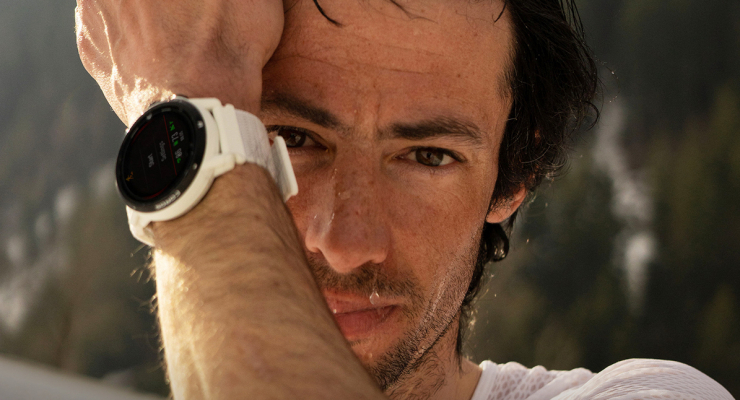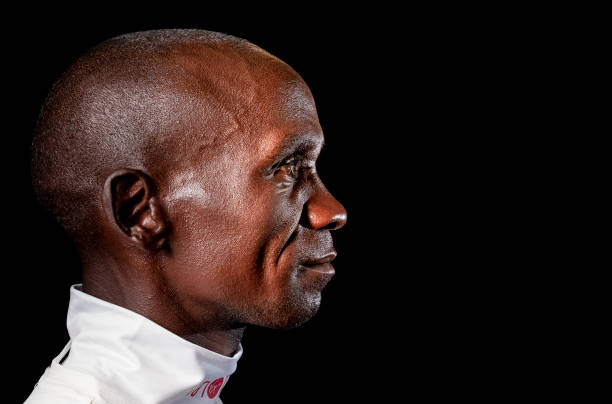maratón je dosť brutálna záležitosť, a vôbec sa nedá definovať iba ako dvakrát dlhšia vzdialenosť ako polmaratón, je to úplne odlišná bežecká disciplína. kým HM považujem za veľmi rýchly krátky beh, kde ak sa nepreženie tempo na prvých pár kilometroch tak sa veľmi nedá odbehnúť ho zle, FM je divočina. pri takomto záhule môžeš byť v klídku 25K a potom ťa významne náhle dokáže vypnúť za pár minút. alebo aj nie. veľkú rolu tu okrem samozrejme kvalitného tréningu zohráva práve hlava. jedna vec je, ako sa dokáže pasovať s dlhotrvajúcou námahou, akú má fyziologicky danú toleranciu na bolesť a schopnosť ju znášať, druhá vec je, ako si vie udržať také naladenie počas preteku, aby nezačala spolupracovať s telom ktoré už celé desiatky minút kričí “zastaň!”… alebo spomaľ…
toto sú myšlienky z článku, ktorý som si čítal predvečer štartu vo frankfurte a okrem toho že ma pekne nabudili, dávali mi aj zmysel. vyberám z nich preto vyslovene tie, ktoré so mnou ladia
1 Get your language right
It’s our inner voice that really determines how we approach something. What we are saying to ourselves at any moment will determine how we feel about race day. If your critical inner voice starts telling you that you are no good, you aren’t going to make it, it will just highlight the fears and anxieties. Your language dictates that internal movie you play in your head: “I hope I don’t hit the wall/ I hope I don’t go too fast/slow.” So it’s very important to direct our language towards how we want to be. Talk about wanting to be confident, relaxed; talk about enjoying the day. Use your voice in a positive way. As humans, we’re very good at talking in negatives to ourselves, less so the positives!
2 Visualise the right things
Imagining yourself crossing the finish line is only really helpful to an extent. It’s like an athlete imagining themselves getting the gold medal: it gives you a certain level of belief, but doesn’t help in the actual process. What you really want to be able to imagine is doing the things that get you to the finish line. When we imagine being able to do something we are mentally rehearsing it. It actually communicates with the body too – when we imagine something, we fire up the same neurons in our brain as when we are actually experiencing it. And we want to prime our brains to be able to deal with those situations.
3 Practise the bad bits in your head – as well as the good
Imagine yourself running nice and calmly yes, but you also can imagine yourself dealing with the more stressful elements of a race as well. And then imagine being able to overcome them – being drawn by the crowds at those key moments, or focusing on your breathing, or setting yourself small goals. Practise overcoming the moments that won’t naturally be on your internal movie.
4 Rename those emotions
What you call the emotion that you are feeling can make a big difference. When you wake up on race day, if your heart-rate is elevated and your hands are a bit clammy and your head is spinning you can start saying you are nervous. But physiologically, it’s pretty much identical to feeling excited. So if you call it excitement, then that heartbeat becomes a positive thing because it’s giving you energy and anticipation towards the race. Better to ride the wave as a positive thing than fight against it.
5 Set small goals
Once you are running, don’t think too far ahead. A lot of people tend to do the first mile and think: “Oh my god I’ve still got 25 miles to go!” And even if you are thinking positively, that doesn’t help because your mind goes out to the future. And what you want to be is in the zone. The zone is a present state. Even with the very top runners, if they start thinking “oh my god I’m going to win this” it can have a detrimental effect on performance because then they aren’t in the present.
The best way to stay in the moment is to set yourself small goals. People can work well to different lengths: a mile, a kilometer or just that lamppost in the distance. But that’s all you focus on: then you set another one. Then another one. And that makes a big difference because you are staying more in the moment than focusing on the distance, which is where all the anxiety is.
6 It’s all about the process, not the outcome
Winners don’t actually think about winning, they think about performing, about putting in a winning performance. For each individual running a marathon, they are going to have their own gold medal in mind. It could be a time, or just completing it, or maintaining running without having to walk for a certain time. The best way to get to that goal is to think about what you are doing in the moment – focus about the process rather than the outcome. That’s the only thing you are in control of at any moment. So that comes alongside staying in the moment. Focus on your rhythm, your movement, your breathing and those targets, those stepping stones nearby. One section at a time.
7 Find your way of blocking out the bad thoughts
It might be counting, or a song in your head, or anything just to take you away from your internal dialogue. When you are suffering, your internal dialogue starts to go against you rather than with you. So, a song in your head, something nice and upbeat, which reflects your running rhythm, can be extremely powerful. Some people might find that annoying and just try counting – like Paula Radcliffe does. Anything to get you away from that internal dialogue.
8 Look up, and look around
People tend to look down at the ground when they are running. That’s unhelpful in various ways – one is that we tend to internalise when we look down. We tend to talk to ourselves more, and feel more pain when we look down. Look up, and instead of staring at things, try to use your peripheral vision. When you use your peripheral vision you go into a kind of light trance, the zone state. So you feel less – well, I like to say discomfort rather than pain! If you are using your peripheral vision, it’s also much much harder to feel stress. You actually have to look for it. When we are stressed or feeling pain we tend to have a narrower focus – tunnel vision – so we zoom in on that pain.
9 Put a smile on your face
You notice this a lot on social media – people talking about loving the training, posting their mileage on Facebook, saying how they love running. But then they get to the race itself and are feeling worried, and they don’t perform the same. They thing they have to feel and think differently because it’s a race – to take it more seriously. But actually, we are less capable when we take things more seriously than when we are having fun. When we are happy we are more energised. We’re more intelligent. The synapses in our brain fire better when we are happy. So we are actually better running with a smile on our faces.
additional – “The power of shifting from “I have to do this” to “Let’s see what I can do” in a race.”
Racing requires us to take on risk that we may not want to take on in practice. Advice – still train every day with an execution mindset, seeking to get the most out of each workout, but when it comes to the race, adopt a mindset that sets up for a breakthrough.
During the race combine the two approaches into one race plan. Run the first half based on an execution mindset (“Run this pace to this point…”) and then the remainder based on an explorative mindset (“and then see what you can do”). This allowes to build in good enough, while being bold enough to chase “as good as possible” later.
An execution mindset emphasizes doing high quality work, and de-emphasizes doing more than necessary. An explorative mindset emphasizes going for it and seeing what’s possible. The latter needs to be part of your racing mindset.







